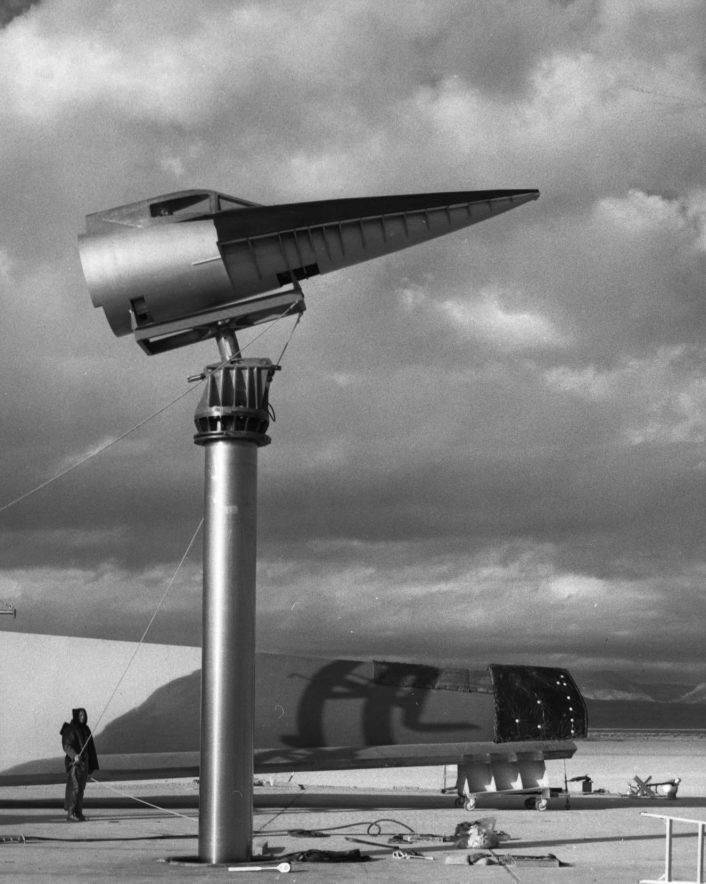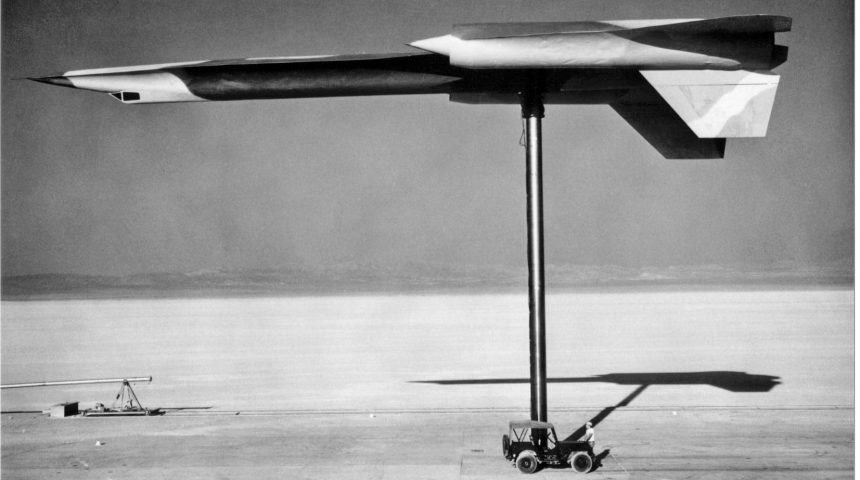Former Area 51 Special Projects Team Member Provides a Remarkable Insight Into Shadowy A-12 Oxcart Project.
In another remarkable chapter in the history of the A-12 Oxcart (as well as the M-21/YF-12A/SR-71 family of Lockheed Skunk Works aircraft), Mr. Thornton D. “TD” Barnes, prolific author and former Area 51 test engineer, has provided a series of fascinating photos from the early radar cross section tests of the Lockheed/CIA A-12. The photo series was posted to Facebook by TD Barnes in the last few days.
TD Barnes is a veteran of Army intelligence, a former missile and radar electronics operator and was a member of the first Hawk missile battalion deployed during the Cold War. He also attended the Army’s Artillery Officer Candidate School. Unfortunately, Barnes suffered an injury forcing the end of his Army career. Undaunted by the setback, TD Barnes went to work for NASA in Nevada on the X-15, XB-70 Valkyrie and several experimental lifting body programs.
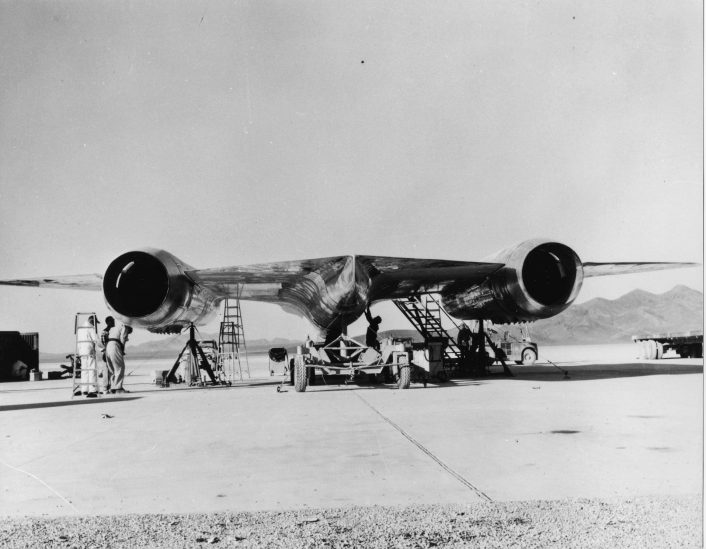
Later, Barnes was a member of a classified special projects team at Area 51 for the Central Intelligence Agency. Barnes then founded his own exploration company that located and extracted petroleum and precious metals. Today Barnes is the CEO of Startel, Inc., is a landowner and mines a quarry in Nevada. He is the president of Roadrunners Internationale, an association of Area 51 veterans, and is the executive director of the Nevada Aerospace Hall of Fame. Barnes has also been featured in a pair of National Geographic documentaries and is a prolific author with over a dozen published titles on Amazon.com.
The recent group of photos he posted on social media include a fascinating look into the secret development of the CIA’s A-12 Oxcart and its radar cross section testing in the emerging era of “stealth”.
The A-12 was the precursor of the famed SR-71 Blackbird. Unlike the later USAF YF-12A and SR-71, the A-12 Oxcart was a single seat aircraft, with the exception of one two-seat trainer version of the A-12, aircraft #60-6927, named the “Titanium Goose”.
Mr. Barnes’ photos include a look at the A-12 radar cross section testing model elevated on a stand in the Nevada desert. The aircraft mock-up could be turned and angled to allow the radar sets to view it at different attitudes while engineers measured its radar return or radar cross section, the amount of radar energy reflected back to a radar receiver from a transmitter. RCS is a critical engineering element for low observable or stealth aircraft. The smaller the radar cross section, the more difficult it is to detect the aircraft.
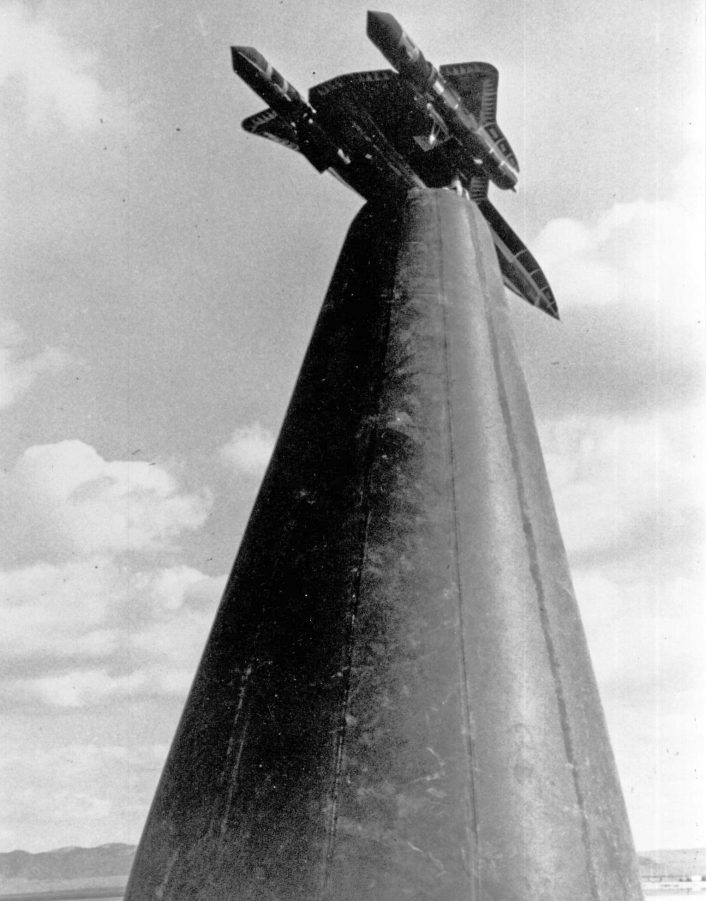
Barnes relates a number of interesting anecdotes with his recent photos. These include
what he called, “A long-running incident attributable to the Special Projects team is one referred to merely as ‘the goat incident.’”
According to Barnes, “The goat, an all-terrain, six-wheel-drive amphibious vehicle, so named by the Special Projects team, hauled electronic test equipment and tools to the radar cross-section (RCS) pylon on the Groom lakebed. One day, during a trip to the pylon, the vehicle somehow caught fire, the flames becoming well advanced before the operator noticed it burning in the rear of the vehicle. The fire destroyed the goat and its contents. For years after that, any time a piece of test equipment became lost or misplaced, the team immediately attributed it to the loss of the goat. Later, an inventory of all the equipment supposedly lost in the goat fire revealed losses that would have filled a small truck. (Most of the items declared as lost always showed up in use by someone else at the time).”
Barnes shared a photo an A-12 undergoing RCS evaluations on a pylon built from, “three Navy battleship propeller shafts welded together”. He went on to explain that, “The A-12 was the CIA’s first stealth plane, its radar cross-section reduced by 90%. We had the plane on the [test] ‘pole’ for 16 months. Every time a Russian satellite came over, we had to take the plane down and hide it. We didn’t know until many years later that the Russians knew what we were doing from their infrared cameras seeing where the plane’s shadow had been. We had other pylons that we used, depending on what we were evaluating, including the Soviet MiG-21 Fishbed fighter jet”.
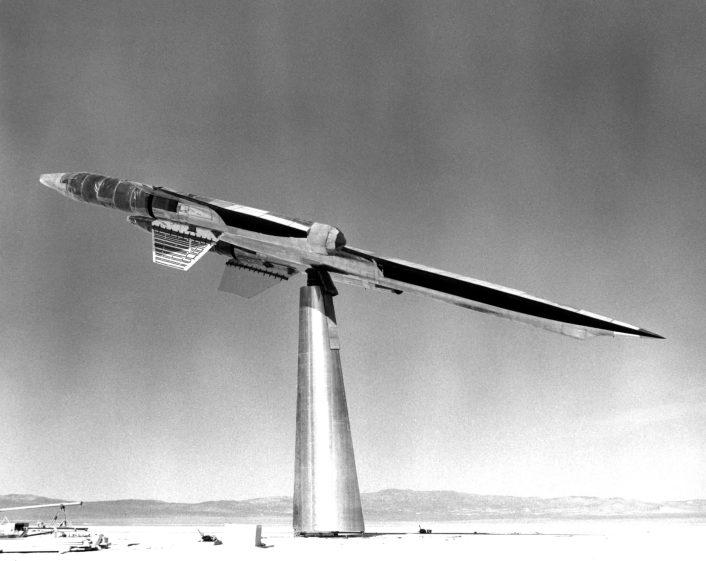
Interestingly, because the early welded, propeller shaft support pole for the A-12 aircraft models had too large of a radar cross section themselves, they were replaced by a wooden support and even an inflatable fabric support, according to Barnes.
Other images show a long fairing behind the exhaust section of the aircraft engine. This shape apparently played a role in evaluating the cesium fuel additive that helped mask the non-stealthy rear aspect of the aircraft at its afterburner exhausts. Barnes mentions, “Adding cesium to the fuel produced a metallic salt, that, when vaporized, had a very low ionization potential and efficiently produced a plasma cloud [behind the aircraft] that reduced radar reflectivity”.
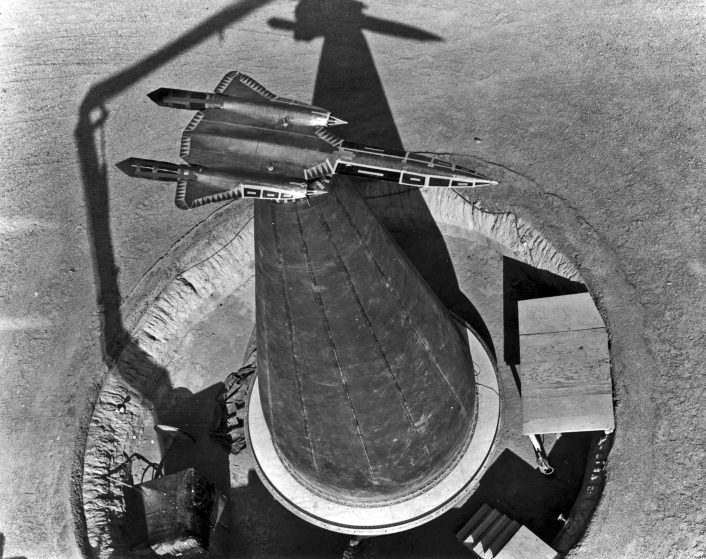
Barnes’ newly released photos show a remarkable era in aircraft design when advances were being made incredibly quickly without the aid of modern computer aided design and other advanced engineering resources like computational fluid dynamics that would not arrive until decades later.
While the A-12 still languishes in relative obscurity compared to its celebrated big brother, the SR-71 Blackbird, the aircraft did contribute significantly to history during the 1968 “Pueblo Incident” when a CIA A-12 pilot named Jack Weeks found the captured U.S. Navy intelligence gathering ship USS Pueblo in Wonsan harbor, North Korea. This, and anecdotes like this latest one provided by TD Barnes, have begun to shed new light on the significance of this truly remarkable aircraft and its fascinating history.
